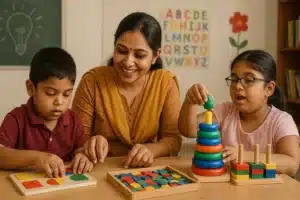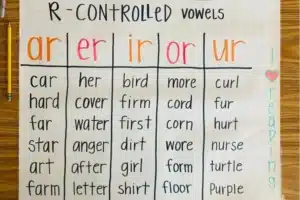
Children may feel disconnected while developing reading and spelling skills, but phonics makes learning smooth and effective. Spelling Phonics is a method that trains children to split words into individual sounds and connect those sounds to distinct letters or letter groups.
Spelling Phonics builds a robust basis by helping them to learn word format. When children learn using Spelling Phonics, they begin to acknowledge patterns in words, which improves their proficiency in spelling accurately. With suitable support and creative Ways to Help Children Learn Spelling Phonics, it can turn spelling practice into a more confident and rewarding experience.
Step-By-Step Guide on How to Teach Spelling with Phonics
Spelling Phonics focuses on the association between sounds and letters, enabling children to read and spell words without any adult support. This method concentrates on fundamental building blocks such as phonemic understanding, sound-letter relations, and mastering common spelling rules.
Below is an explicit, Step-By-Step Guide on How to Teach Spelling with Phonics:
Begin with Phonemic Grasp
Phonemic grasp is the ability to listen, recognize, and use the individual sounds—called phonemes—in uttered words. It’s a basic step before presenting written letters.
- Start with simple sound plays where children split down and blend sounds orally.
- Stimulate children to listen for starting, middle, and concluding sounds in words.
- Use rhyming activities and sound matching to strengthen their auditory skills.
Phonemic awareness lays the groundwork for successful learning in Spelling Phonics by tuning the ears to the smallest units of sound.
Introduce Letter-Sound Correspondence
Once children can identify and manipulate phonemes, the subsequent step is to teach them that each sound is characterized by a letter or letter group.
- Teach one sound-letter pair at a time, starting with short vowels and consonants.
- Use multisensory means to make learning dynamic.
- Focus on regular practice, ensuring that children associate each phoneme with its corresponding letter(s).
This direct link between letters and sounds is the heart of Spelling Phonics.
Blend and Segment Sounds in Words
Once children develop a solid command over individual sounds and their letter forms, it’s time to progress toward blending and segmenting
- Practice segmenting words into their respective individual phonemes and noting them down.
- Use graphical resources to present how sounds combine to form words.
- Strengthen this through activities such as altering one letter to form a new word.
Blending and segmenting support the key principles of Spelling Phonics and enhance both reading and spelling skills.
Teach Spelling Structure and Word Families
Children should be acquainted with everyday spelling patterns to make spelling more predictable and effortless.
- Start with simple word families like -at, -it, -in, -ot, etc., and then move to complex patterns like -ink, -ight, and so on.
- Emphasize patterns such as silent letters, vowel teams, and consonant blends.
- Group words by identical endings or starts to show consistency in spelling rules.
Recognizing patterns helps children apply Spelling Phonics more fluently in everyday writing.
Introduce Spelling Rules Gradually
While some words observe standard patterns, others need a familiarity with spelling rules.
- Explain rules such as “i before e except after c,” doubling consonants, changing y to i, etc.
- Provide examples and let children apply each rule in spelling exercises.
- Revisit and reinforce rules through regular writing and reading activities.
These rules support the logic behind English spelling and strengthen children’s grasp of Spelling Phonics.
Provide Daily Practice and Review
Consistent practice is essential to mastering spelling.
- Use dictation, word sorts, and interactive games to reinforce learning.
- Review previously taught phonemes and patterns regularly.
- Encourage writing short sentences or stories using the words learned through Spelling Phonics.
Everyday exposure helps children retain and use spelling mastery in real contexts.
By pursuing this structured approach, children can acquire a solid foundation in spelling through phonics. Phonics Teacher Training Course makes Spelling Phonics a potent tool for literacy growth by equipping teachers with techniques to teach phonemic understanding, sound-letter mapping, spelling patterns, and rules.
Click Here, to download the brochure of Phonics Course!
Call or Whatsapp on +918104606573 / +919869866277, for more details of Phonics Course!
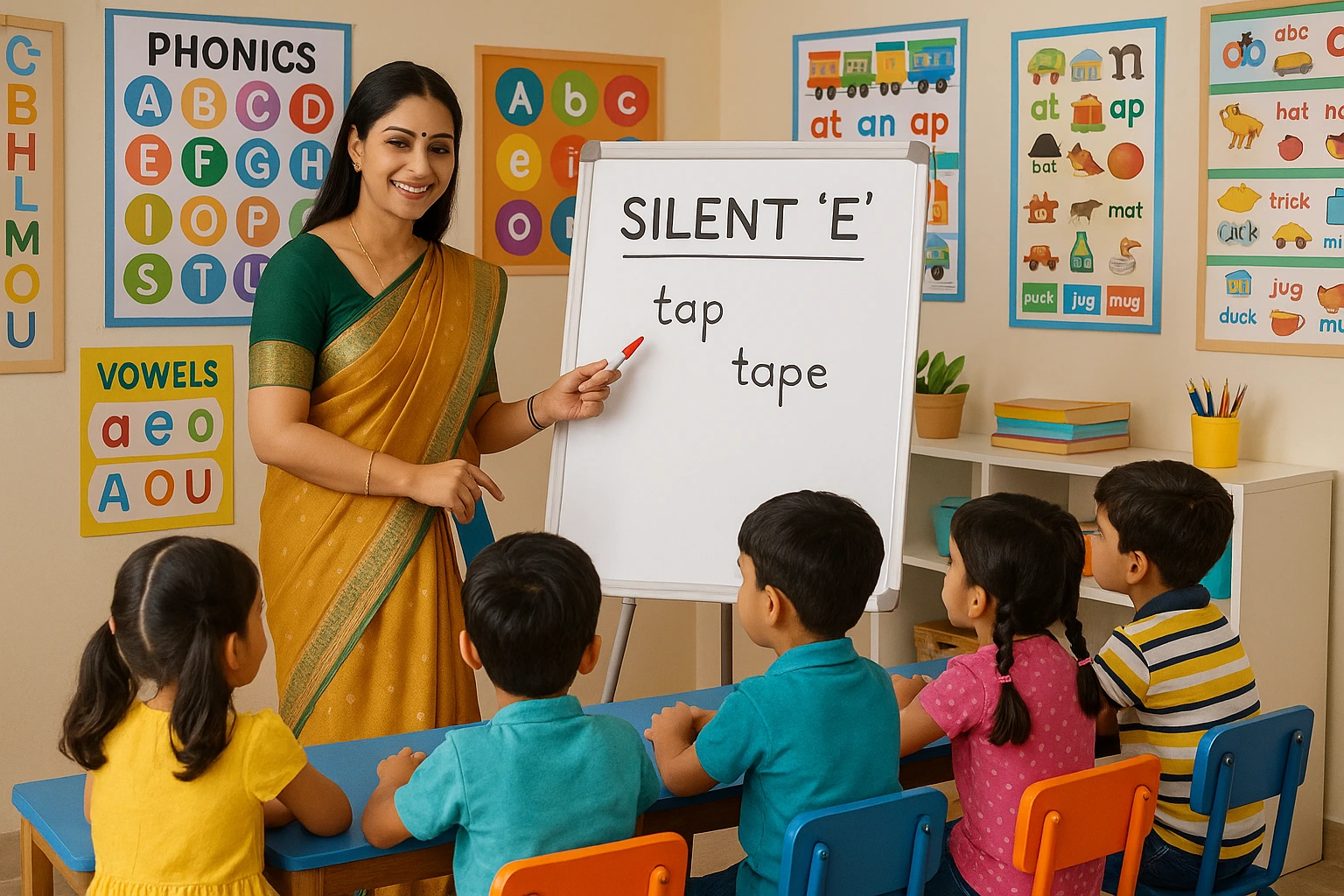
Learn Spelling Patterns and Rules
Learning spelling patterns and rules is important for children to build confidence in writing and reading. With the aid of Spelling Phonics, children can master these rules logically and effectively. Spelling Phonics links sounds to letters and patterns, enabling children to spell accurately and read adeptly.
Below are essential spelling rules that every learner should know:
Silent E
The silent e rule is one of the most significant rules in Spelling Phonics. This rule describes how an “e” at the end of a word alters the vowel sound from short to long. For instance:
- cap becomes cape
- kit becomes kite
- hop becomes hope
The silent e doesn’t make a sound itself, but it modifies the vowel that comes before it. Understanding this rule helps children avoid typical spelling errors and enhances word recognition.
Long Vowel Patterns
Long vowels are vowel sounds that say their own name, and they often follow certain patterns. Some common long vowel spelling patterns include:
- ai as in rain
- ee as in tree
- oa as in boat
- ue as in blue
In Spelling Phonics, children are trained to look for these patterns and connect them to the right vowel sounds. Learn Spelling Patterns and Rules to reduce confusion when spelling words with identical sounds but distinct spellings. For example, understanding the difference between meat and meet becomes easier when children recognize the “ea” and “ee” patterns.
Plural Forms
Plural spelling rules can vary, but Spelling Phonics helps children understand the logic behind them. Some key rules include:
- For most nouns, just add –s (e.g., eat → eats)
- For words ending in –s, –x, –z, –sh, –ch, add –es (e.g., fox → foxes)
- If a word ends in a consonant + y, change the “y” to “i” and add –es (e.g., baby → babies)
These rules might appear tricky initially, but with repeated practice using Spelling Phonics, children begin to apply them perfectly without much effort. The method supports step-by-step learning, reinforcing spelling through sound and letter patterns.
Using Spelling Phonics to teach spelling patterns and rules gives children a strong base to build their language skills. Silent “e,” long vowel patterns, and plural rules are just a few examples where phonics instruction can make a clear difference. With regular exposure and practice, children become more confident and consistent in their spelling.
Click Here, to download the brochure of Phonics Course!
Call or Whatsapp on +918104606573 / +919869866277, for more details of Phonics Course!
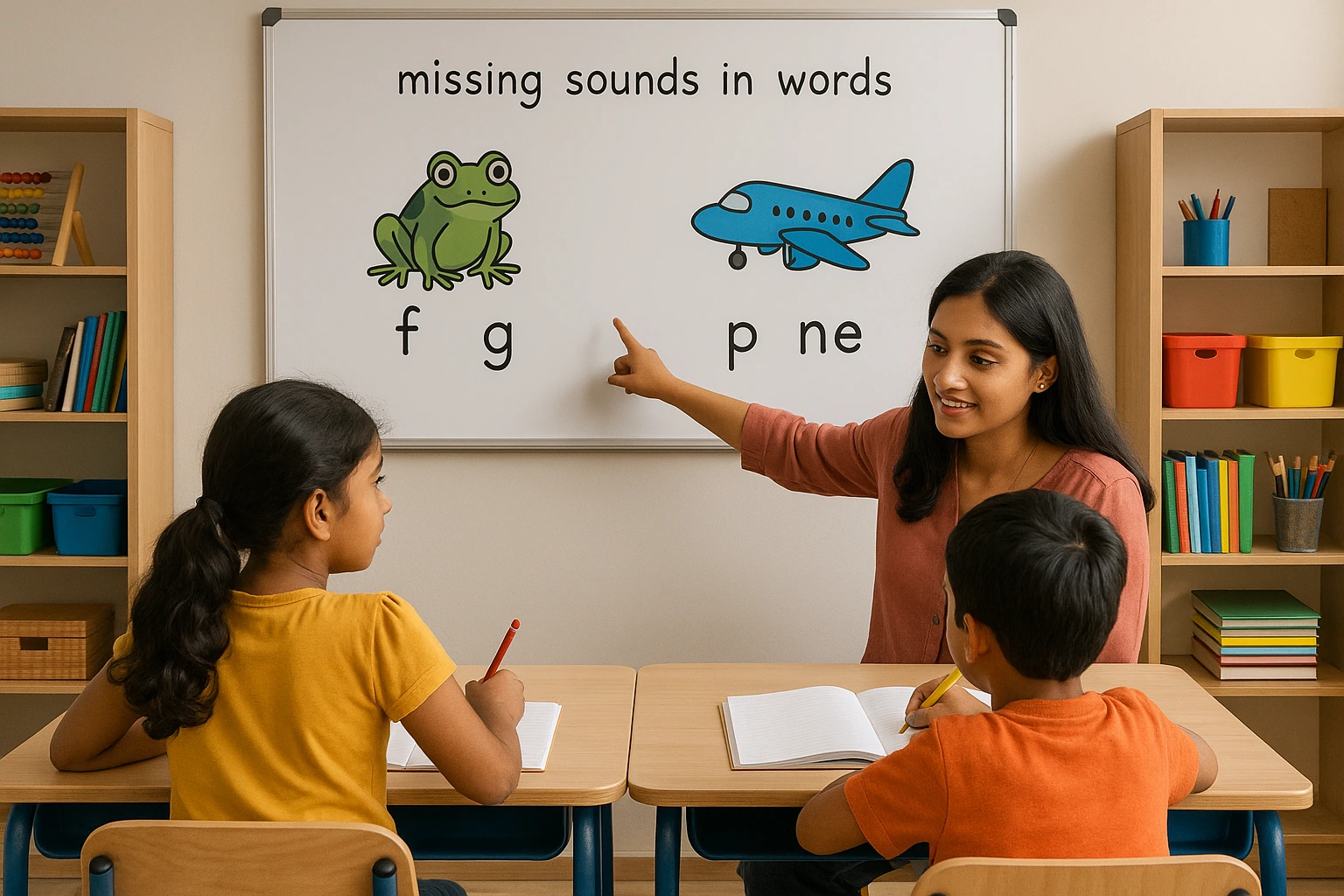
Addressing Challenges in Spelling
Learning to spell involves more than memorizing letters—it requires coordination, sound cognition, and regular practice. Children often face several difficulties as they begin this journey.
Spelling Phonics techniques can effectively address these common difficulties:
Pencil Holding Difficulty
- Many young learners struggle with pencil hold and motor skills, which impacts their writing.
- Solution: Encourage activities like tracing, using playdough, or finger painting to build fine motor strength. Let children form letters in sand or on whiteboards before starting formal writing tasks.
Reversing Letters
- Confusing letters like ‘b’ and ‘d’ or ‘p’ and ‘q’ are expected early on.
- Solution: Use visual cues and familiar associations—such as “b is bat and ball.” Spelling Phonics with phoneme-letter matching and multisensory repetition helps correct reversals.
Missing Sounds in Words
- Kids may spell “frog” as “fog” or “plane” as “pan.”
- Solution: Teach sound segmentation with activities like tapping or using counters. Slow dictation and stretching out words reinforce complete sound representation.
Trouble with Irregular Spellings
- Words like “knee” or “phone” confuse learners.
- Solution: Group tricky spellings and use mnemonics. Spelling Phonics helps reinforce patterns through word families and visual aids.
Low Confidence from Errors
- Repeated mistakes can lower morale.
- Solution: Offer praise, set small goals, and adapt pacing to the child’s level. Encouraging review boosts retention and self-esteem.
- Phonics Teacher Training Course equips teachers with targeted Spelling Phonics strategies, making addressing Challenges in Spelling effortless.
Click Here, to download the brochure of Phonics Course!
Call or Whatsapp on +918104606573 / +919869866277, for more details of Phonics Course!
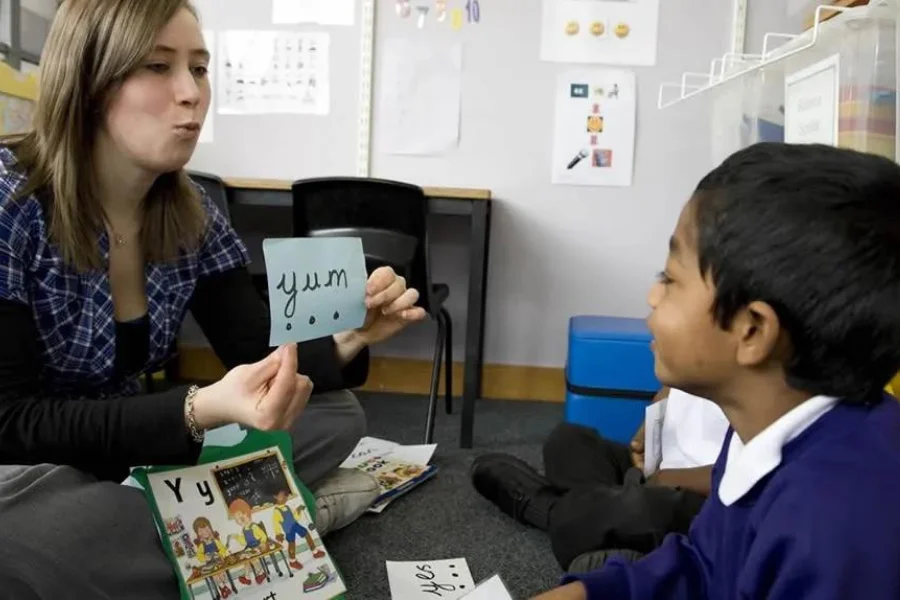
Source: thephoenixnewspaper
Spelling and Reading Fluency
Spelling and Reading Fluency develop hand in hand, and Spelling Phonics is a key approach to support both. It helps children connect sounds to letters and acknowledge patterns, improving literacy skills.
Here’s how Spelling Phonics supports fluency:
- Phoneme Understanding : Children learn to listen and split words into respective sounds, helping them spell unknown words with accuracy.
- Sound-to-Letter correspondence: Everyday phonics practice helps children quickly correspond sounds with letters, facilitating both spelling and reading speed.
- Pattern Recognition: Recognizing word families like “-ight” in light, night, and sight makes it easier to recall spellings and read fluently.
- Blending and Segmenting: These skills help children read words smoothly and spell them accurately, supporting faster reading.
- Confidence through Consistency: Spelling Phonics offers a reliable method that builds confidence as children gain success in spelling and reading.
- Writing Reinforces Reading: Writing using phonics techniques strengthens the same skills needed for fluent reading.
Spelling Phonics gives children lifelong tools to decode and encode language. If you’re passionate about literacy, the Phonics Teacher Training Course by Vidhyanidhi Education Society (Govt. Regd.) equips you with effective teaching methods to guide young learners confidently.
Master phonics teaching skills—join Vidhyanidhi’s expert Phonics Course today!
Click Here, to download the brochure of Phonics Course!
Call or Whatsapp on +918104606573 / +919869866277, for more details of Phonics Course!
FAQs
What is Phonics-Based Spelling?
Phonics-based spelling teaches children to correspond sounds to letters, allowing them to spell by splitting words into respective sound parts and applying spelling patterns.
Why is Phonics Important for Spelling?
Phonics helps children understand how sounds relate to letters, making it manageable to spell words accurately by identifying patterns and building robust language skills.
How can I Teach Spelling Rules Effectively?
Use clear phonics instruction, practice regularly with word families, focus on patterns, and reinforce rules through engaging reading and writing activities.


